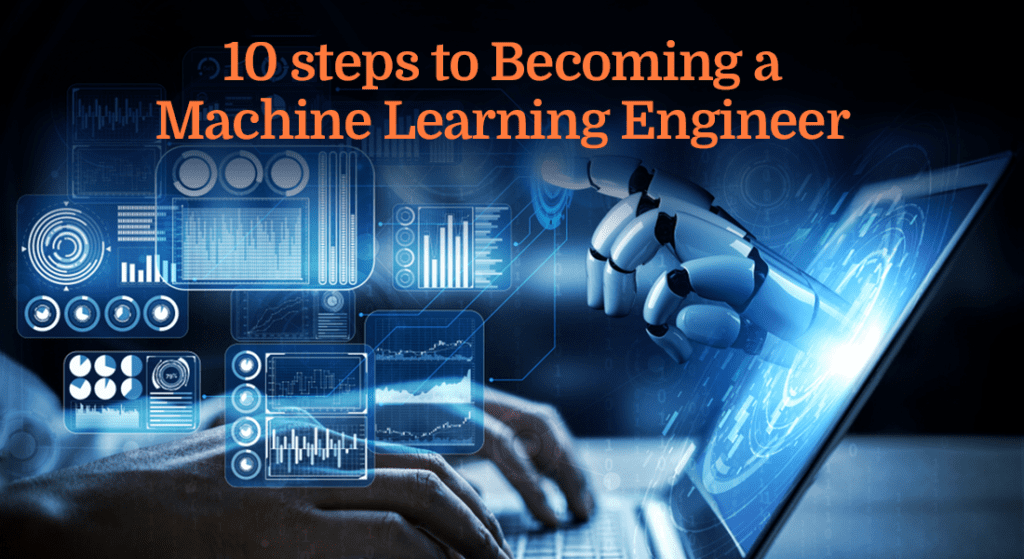Are you intrigued by the endless possibilities that artificial intelligence and machine learning offer? Are you captivated by the idea of creating intelligent systems that can learn from data and make informed decisions? If so, then the journey to becoming a proficient machine learning engineer might be your calling. In this article, we’ll guide you through the essential steps to embark on this exciting career path, from understanding the basics to mastering complex algorithms. Join us as we explore the realm of machine learning and unveil the roadmap to becoming a successful machine learning engineer.
Getting Acquainted with Machine Learning
What is Machine Learning?
At its core, machine learning involves the creation of algorithms and models that enable computers to improve their performance on a specific task through experience. These algorithms learn from data, iteratively enhancing their performance without being explicitly programmed. This revolutionary technology has found applications in diverse fields, ranging from self-driving cars to medical diagnosis.
The Role of Machine Learning Engineers
Machine learning engineers are the architects behind the intelligent systems we interact with daily. They bridge the gap between data science and software engineering, working on the design, development, and deployment of machine learning models. Their responsibilities include data preprocessing, model selection, training, and optimization. They are the driving force behind the application of machine learning in real-world scenarios.
Laying the Foundation
Grasping Data Distribution
Before delving into machine learning algorithms, understanding data distribution is crucial. The way data is distributed impacts model performance. Whether it’s a normal distribution, skewed data, or outliers, comprehending these aspects helps in making informed decisions during model selection and training.
Exploring Data Representation Methods
Data representation is the process of transforming raw data into a format suitable for machine learning algorithms. Techniques such as one-hot encoding, word embeddings, and scaling are vital for ensuring that the input data is structured in a way that can be effectively utilized by machine learning models.
Diving into Machine Learning Algorithms
Understanding Machine Learning Models
Machine learning models are the heart of any intelligent system. They are mathematical representations that learn patterns from data and make predictions or decisions. Supervised, unsupervised, and reinforcement learning are the primary categories of machine learning, each serving distinct purposes.
Types of Machine Learning Algorithms
Machine learning offers a plethora of algorithms, including decision trees, support vector machines, neural networks, and clustering algorithms. Understanding the strengths and weaknesses of each algorithm is essential for choosing the right approach for a given problem.
Learning Programming Languages and Tools
Python: The King of Machine Learning
Python‘s simplicity and versatility have made it the go-to programming language for machine learning. Its rich ecosystem of libraries, such as NumPy, pandas, and scikit-learn, provides tools for data manipulation, analysis, and model development.
Leveraging AI Tools for Efficiency
The field of machine learning has witnessed the emergence of AI tools that streamline various tasks. Tools like AutoML and generative AI frameworks reduce manual effort, automating tasks such as hyperparameter tuning and model architecture search.
Mastering Machine Learning Libraries
TensorFlow: A Powerhouse for ML
TensorFlow, an open-source machine learning library, is celebrated for its flexibility in building and training various types of neural networks. Its high-level APIs and robust community support make it a staple for engineers.
PyTorch: Empowering Your Models
PyTorch‘s dynamic computation graph and intuitive interface make it a favorite among researchers and engineers alike. Its seamless integration with GPU acceleration speeds up training, enabling the development of complex models.
Feature Engineering and Preprocessing
The Art of Feature Engineering
Feature engineering involves selecting and transforming the right features from raw data to enhance model performance. This process requires domain knowledge and creativity to extract meaningful insights that can boost the predictive power of the model.
Data Preprocessing: Cleaning and Enhancing
Raw data is often messy and contains inconsistencies. Data preprocessing involves cleaning, handling missing values, and standardizing data to ensure that the model receives high-quality input. This step significantly influences the model’s ability to learn and generalize.
Training Your Models
Data Splitting: Training, Validation, and Testing
To evaluate a model’s performance accurately, the dataset is divided into training, validation, and testing sets. The training set is used to train the model, the validation set helps in hyperparameter tuning, and the testing set assesses the model’s final performance.
The Iterative Process of Model Training
Model training is rarely a one-shot endeavor. It’s an iterative process involving selecting an algorithm, initializing model parameters, and updating them based on the error between predictions and actual outcomes. Fine-tuning the model continues until optimal performance is achieved.
Validation and Hyperparameter Tuning
Ensuring Model Generalization
A model that performs exceptionally well on the training data but poorly on new, unseen data is said to overfit. Validation techniques like cross-validation help in evaluating a model’s ability to generalize to new data and avoid overfitting.
Fine-Tuning Hyperparameters for Better Results
Hyperparameters are parameters set before model training that affect its behavior. Tuning these hyperparameters can significantly impact a model’s performance. Techniques like grid search and random search aid in finding the best combination of hyperparameters.
Real-World Projects and Continuous Learning
Building Your Machine Learning Portfolio
Practical experience is invaluable in the journey to becoming a machine learning engineer. Engaging in real-world projects, whether personal or collaborative, helps in applying theoretical knowledge to solve practical problems and build a strong portfolio.
Embracing a Lifelong Learning Journey
The field of machine learning is dynamic and ever-evolving. Continuous learning is crucial to stay updated with the latest algorithms, tools, and trends. Online courses, research papers, and attending conferences contribute to keeping your skills sharp.
Becoming a proficient machine learning engineer is a transformative journey that combines theory and practice, creativity and logic, and innovation and precision. By understanding the fundamentals, mastering programming languages, and delving into the realm of machine learning algorithms, you equip yourself with the tools to create intelligent systems that shape the future. Remember, the path might be challenging, but the rewards are limitless. As you embark on this exciting adventure, let ITservon be your guiding light, offering resources, expertise, and opportunities that pave the way for your success in the captivating world of machine learning engineering.
With every step you take, you’re not just learning; you’re crafting a future where machines think, learn, and make a difference.











